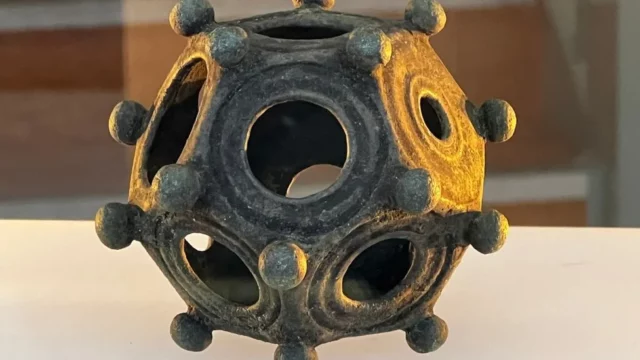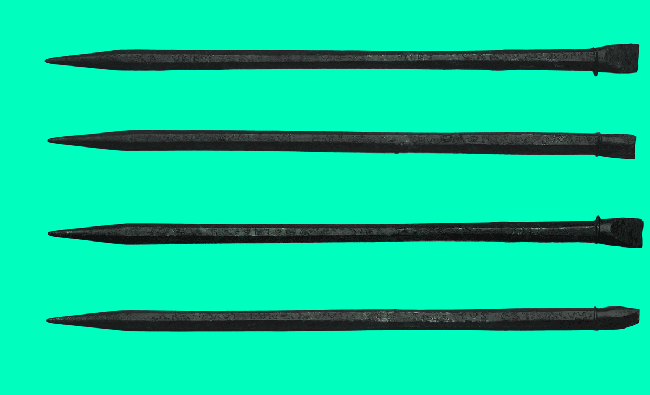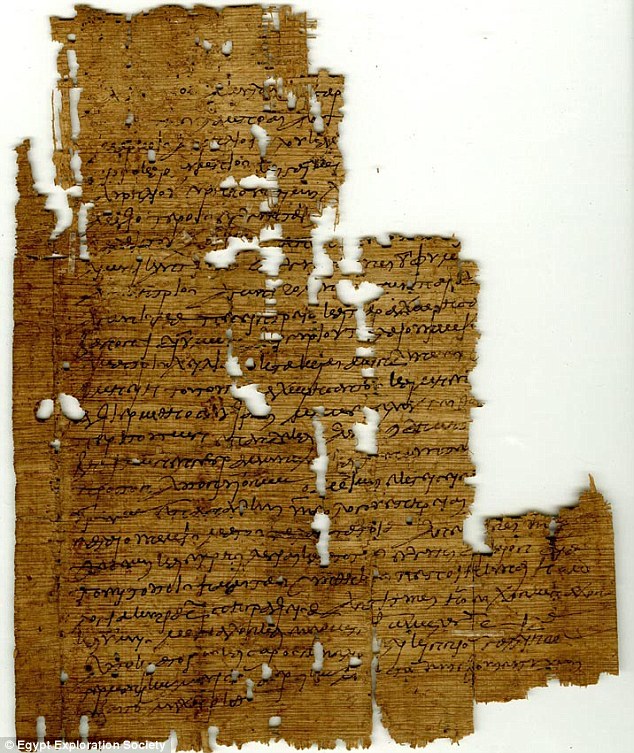A mysterious Roman artefact found during an amateur archaeological dig is going on public display in Lincolnshire for the first time.
The object is one of only 33 dodecahedrons found in Britain, and the first to have been discovered in the Midlands.
…
I learned about these… things… from this BBC News story and I’m just gobsmacked. Seriously: what is this thing?
This isn’t a unique example. 33 have been found in Britain, but these strange Roman artefacts turn up all over Europe: we’ve found hundreds of them.
It doesn’t look like they were something that you’d find in any Roman-era household, but they seem to be common enough that if you wandered around third century Northern Europe with one for a week or so you’d surely be able to find somebody who could explain them to you. And yet we don’t know why.
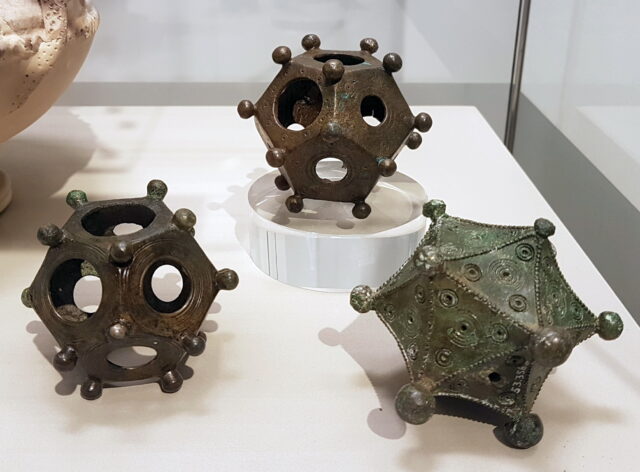
We have absolutely no idea why the Romans made these things. They’re finely and carefully created from bronze, and we find them buried in coin stashes, which suggests that they were valuable and important. But for what? Frustrated archaeologists have come up with all kinds of terrible ideas:
- Maybe they were a weapon, like the ball of a mace or something to be flung from a sling? Nope; they’re not really heavy enough.
- At least one was discovered near a bone staff, so it might have been a decorative scepter? But that doesn’t really go any distance to explaining the unusual shape, even if true (nor does it rule out the possibility of it being some kind of handled tool).
- Perhaps they were a rangefinding tool, where a pair of opposing holes line up only when you’re a particular distance from the tool? If a target of a known size fills the opposite hole in your vision, its distance must be a specific multiple of your distance to the tool. But that seems unlikely because we’ve never found any markings on these that would show which side you were using; also the devices aren’t consistently-sized.
- Roleplayers might notice the similarity to polyhedral dice: maybe they were a game? But the differing-sized holes make them pretty crap dice (researchers have tried), and Romans seemed to favour cubic dice anyway. They’re somewhat too intricate and complex to be good candidates for children’s toys.
- They could be some kind of magical or divination tool, which would apparently fit with the kinds of fortune-telling mysticism believed to be common to the cultures at the sites where they’re found. Do the sides and holes correspond to the zodiac or have some other astrological significance?
- Perhaps it was entirely decorative? Gold beads of a surprisingly-similar design have been found as far away as Cambodia, well outside the reach of the Roman Empire, which might suggest a continuing tradition of an earlier precursor dodecahedron!
- This author thinks they might have acted as a kind of calendar, used for measuring the height of the midday sun by observing way its beam is cast through a pair of holes when the tool is placed on a surface and used to determine when winter grains should be planted.
- Using replicas, some folks online have demonstrated how they could have been used as a knitting tool for making the fingers of gloves using a technique called “spool knitting”. But this knitting technique isn’t believed to have been invented until a millennium later than the youngest of these devices.
- Others have proposed that they were a proof of qualification: something a master metalsmith would construct in order to show that they were capable of casting a complex and intricate object.
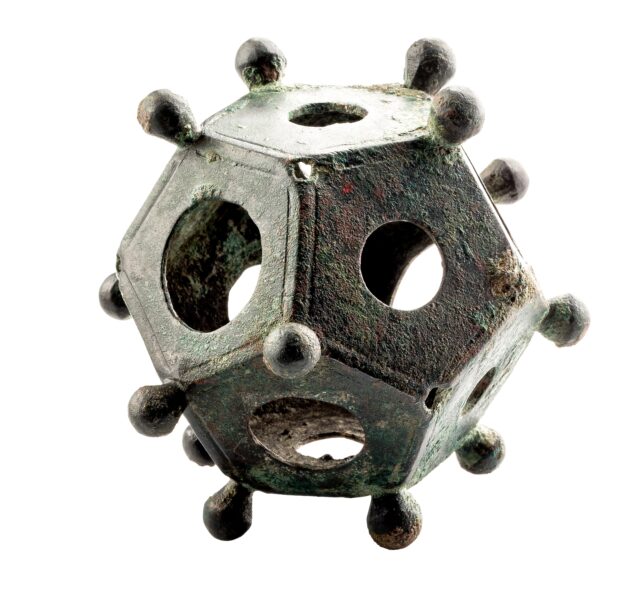
I love a good archaeological mystery. We might never know why the Romans made these things, but reading clever people’s speculations about them is great.
